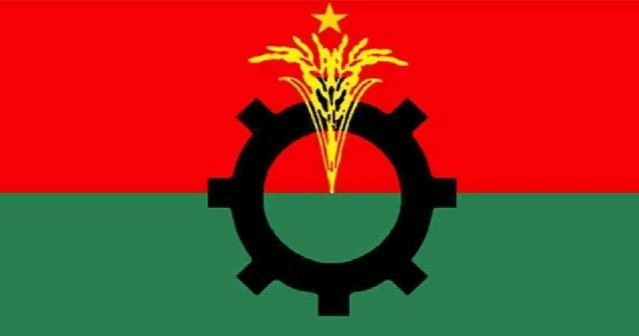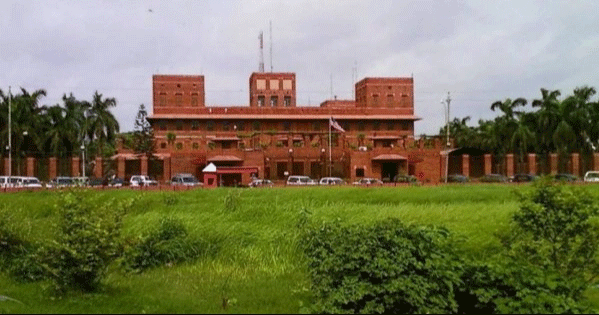2 ministries propose same project
for Tk 531 cr!
To protect from lightnings
Mahfuja Mukul: In recent years, the number of deaths due to lightning has been increasing in the country. The period from March to June is considered as the thunderstorm season. Last year also, in this (March-June) four months, 18 people died due to lightning in the country. In 10 months of the year (January 1-November 7) 329 people died. In a survey conducted by the environmental organization Paribesh Bachao Andolan (Puba) last November, it said that 2,600 people had been killed in lightning strikes in the last 11 years during 2011 to 2021.
The government declared it a natural disaster in 2016 due to the increase in deaths due to lightning.
Experts believe that the increase in the number of deaths for lightning is due to the increase in use of mobile phones, overcrowding and increased involvement of people in the field and water bodies during the thunderstorm season.
In addition, after the declaration of a natural disaster, the surveillance of various government and non-government organizations and institutions has increased. The real information of death is coming up in it.
Experts have emphasized the need to increase social awareness as well as infrastructural preparation to save people from lightning.
Every year during the paddy harvest season, many farmers are killed by lightning in Haoranchal. The Ministry of Agriculture is taking a project to protect other people including farmers from this. The Ministry of Disaster Management and Relief has also undertaken a similar project.
The two projects will also install lightning protection devices and alert farmers and others before lightning strikes with the help of mobile apps, mobile voice and mobile text messages. At the same time, the issue of public awareness is gaining importance in the projects proposed by the two ministries.
Officials at the Ministry of Disaster Management say that after the government declared lightning as a natural disaster, it became the responsibility of the Ministry of Disaster Management to deal with it. On the other hand, those involved in the project of the Ministry of Agriculture say that it is the job of the Ministry of Agriculture to provide protection to the farmers. So, the ministry can take any project for the farmers. Both the ministries also think that the number of deaths due to lightning will be reduced if the mentioned projects are implemented.
The cost of the proposed project of the Ministry of Agriculture titled ‘Installation of
lightning protection system to protect the lives of farmers in haoranch’ has been estimated at Tk 231 crore. The project will be implemented through the Department of Agricultural Extension under the Ministry of Agriculture. The cost of the project of the Ministry of Disaster Management has been estimated at Tk 300 crore, which is to be implemented through the Department of Disaster Management.
The Ministry of Agriculture held its second review meeting on February 1. Representatives of other ministries were also present at the meeting. The representative of the Ministry of Disaster Management said that this project of the Ministry of Agriculture is similar to the project of the Ministry of Disaster Management. This will create duality. Besides, this work is under the jurisdiction of the Ministry of Disaster.
According to the Ministry of Disaster Management and Relief, the project is being undertaken at a cost of Tk 300 crore for the construction of lightning-resistant concrete shelters with lighter arresters in 23 lightning-prone districts, including haoranchal. Initially (Pilot Project) 1000 lightning-proof concrete tents will be constructed 1 km apart in haor area. The probable construction cost of each cantonment has been estimated at Tk 3 lakh 25 thousand.
Priority is also being given to early warning systems and raising public awareness to reduce lightning deaths. One thousand consecutive lightning-proof tents will be constructed in haoranch for one kilometer in a row. People, including field farmers, will be able to take shelter in these shelter camps as soon as they hear the thunder of the clouds.
Lighter arresters will be installed in each shelter. Early Warning System This warning will reach everyone including the farmers of the field through mobile. Besides, public awareness will be increased under this project, said the project concerned of the relief ministry.
On the other hand, the project of the Ministry of Agriculture will be implemented in 56 upazilas of seven districts of haoranchal. 16 Early Steamer Emitters (ESEs) with a radius of 100 to 120 square meters will be installed in the agricultural lands of four upazilas of the haor area as a pilot.
The proposed project includes sensor-based automated ‘Cloud to Ground’ and ‘Cloud to Cloud Lightning Detection Systems’ via ‘Earth Networks Lighting and Severe Weather Early Warning Solution’ for use in haoranchal. The project will alert the farmers of the project area up to 45 minutes before the lightning strikes with the help of mobile text message.
Additional Secretary of the Ministry of Agriculture (Planning) Abdur Rauf said about the project. “It’s not our mandate, we may not be able to do it,”. However, the Department of Agricultural Extension has been asked to look into everything in the project.
Rehana Sultana, an agricultural economist at the Planning, Project Implementation and ICT Wing of the Department of Agricultural Extension, told, “In 2019, the Minister of Planning gave instructions to our Secretary (Ministry of Agriculture). The Ministry of Agriculture has been given the responsibility as it is mainly related to farmers. The Ministry of Agriculture will implement it through the Department of Agricultural Extension. Because, the department has manpower at field level.
It is too late for us to take it as it is a highly technical project. We are taking up the project by talking to the stakeholders at home and abroad. ‘
“We’ve talked to BUET (Bangladesh University of Engineering and Technology) authorities, we’ve talked to the Rural Electrification Board, we’ve talked to American and Canadian users of lightning protection technology,” he added.
I have spoken to the Ministry of Fisheries and Livestock, the Department of Haor and Wetland Development, the Department of Disaster Management, the Institute of Water Modeling (IWM) and various non-governmental organizations. There has been an inter-ministerial meeting recently. Almost everyone has shown a positive attitude towards the implementation of the project.
Agricultural economist Rehana Sultana added, “Under the project, two arresters will be set up within a kilometer.” The lightning will go 25 meters deep in the ground. They (Ministry of Disaster Management and Relief) do not have enough manpower to carry out the Hughes campaign. We have it. Their DPP we saw, there is no Lightning Arrester. They will shelter and give a forecast. We are not putting shelter in our project because they will shelter. The same thing can’t happen.
According to sources in the Ministry of Agriculture, a representative of the Ministry of Disaster Management said at the project review meeting on February 1 that the Disaster Management Department is in the process of approving two projects to protect the common man from disasters. One of them is in the Planning Commission and the other is in the green leaf of the Annual Development Program for FY 2021-22. The DPP formulation work is underway.
The feasibility study of the Meteorological Department of Dhaka University has been done for the DPP sent to the Planning Commission. The Ministry of Disaster Management and Relief or the Department of Disaster Management is mandated (to do any work) to ensure that lightning strikes are identified as a natural disaster and to provide early warning and protection from all other disasters.
During the meeting, the official of the Ministry of Disaster Management expressed concern that the activities of the project proposed by the Ministry of Agriculture should be reviewed to see whether it would create a duality with the project under the Ministry of Disaster Management and Relief.
According to the official, lightning and related issues are mandated by the Ministry of Disaster Management and Relief or the Department of Disaster Management. As a result, it will be considered whether it would be appropriate to implement the project through DAE (Department of Agricultural Extension) under the Ministry of Agriculture.
Rabindranath Burman, Additional Secretary (Planning and Development, Audit, Disaster Management-3, NDRCC), Ministry of Disaster Management and Relief, told: It’s up to us. The mandate is from the Ministry of Disaster Management. The Ministry of Agriculture has not implemented the project, nor have we. Our project has not yet been sent to the Planning Commission. We will send it soon.”
According to the Ministry of Relief and Disaster Management, 179 people died in 2011 due to lightning, 201 in 2012, 185 in 2013, 160 in 2014, 160 in 2015, 283 in 2016, 301 in 2016 and 359 in 2016, 198 people died in 2019, 211 people died in 2020 and 363 people died in 2021.
Last year, seven people were killed in lightning strikes in seven districts of the country inhabited by haors. Of these, 16 died in Kishoreganj, 18 in Netrokona, 12 in Habiganj, 12 in Sunamganj, 6 in Sylhet, 1 in Moulvibazar and 1 in Brahmanbaria, according to the Ministry of Disaster Management.
President Joe Biden tests positive for COVID-19 while campaigning in Las Vegas, has ‘mild symptoms’
International Desk: President Joe Biden tested positive for COVID-19 while traveling Wedne…







